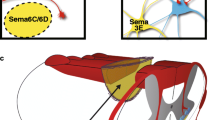Abstract.
Although early after birth the central nervous system is more plastic than in the adult, it already displays limited regenerative capability. This becomes severely impaired at specific stages of embryonic development; however, the precise cellular and molecular basis of this loss is not fully understood. The chick embryo provides an ideal model for direct comparisons of regenerating and non-regenerating spinal cord within the same species because of its accessibility in ovo, the extensive knowledge of chick neural development and the molecular tools now available. Regenerative ability in the chick is lost at around E13, a relatively advanced stage of spinal cord development. This is most likely due to a complex series of events: there is evidence to suggest that developmentally regulated changes in the early response to injury, expression of inhibitory molecules and neurogenesis may contribute to loss of regenerative capacity in the chick spinal cord. (Part of a Multi-author Review)
Similar content being viewed by others
Author information
Authors and Affiliations
Corresponding author
Rights and permissions
About this article
Cite this article
Ferretti, P., Whalley, K. Molecular and Cellular Basis of Regeneration and Tissue Repair. Cell. Mol. Life Sci. 65, 45–53 (2008). https://doi.org/10.1007/s00018-007-7430-2
Published:
Issue Date:
DOI: https://doi.org/10.1007/s00018-007-7430-2




